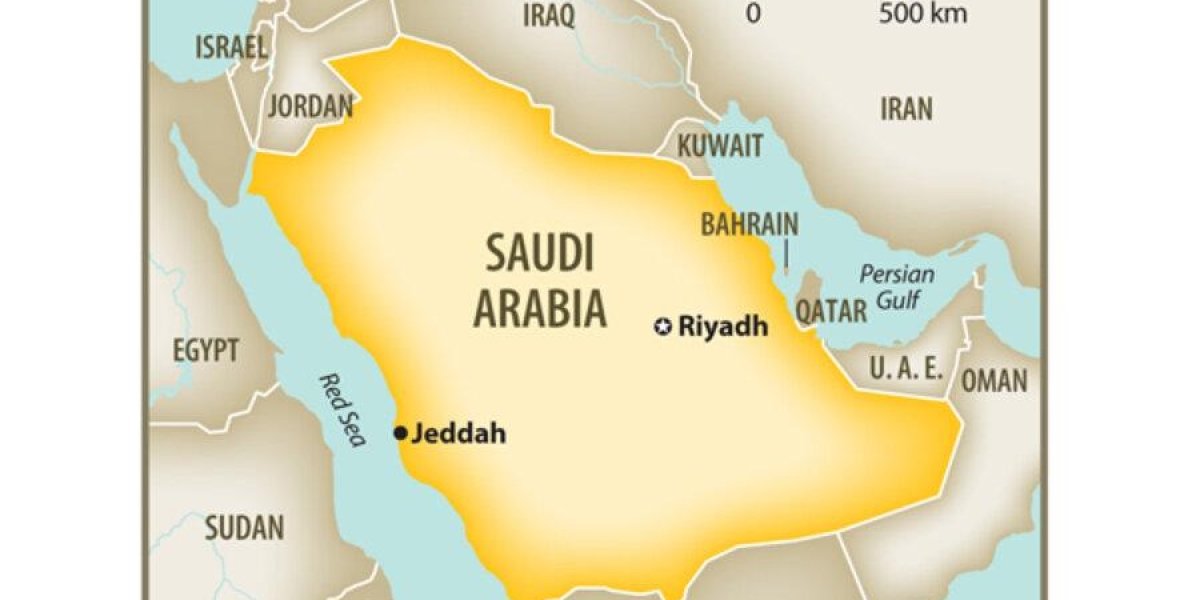Writer: NU’MAN ABD AL-WAHID
The covert alliance between the Kingdom of Saudi Arabia and the Zionist entity of Israel should be no surprise to any student of British imperialism. The problem is the study of British imperialism has very few students. Indeed, one can peruse any undergraduate or post-graduate British university prospectus and rarely find a module in a Politics degree on the British Empire let alone a dedicated degree or Masters degree. Of course if the European-led imperialist carnage in the four years between 1914 – 1918 tickles your cerebral cells then it’s not too difficult to find an appropriate institution to teach this subject, but if you would like to delve into how and why the British Empire waged war on mankind for almost four hundred years you’re practically on your own in this endeavor. One must admit, that from the British establishment’s perspective, this is a formidable and remarkable achievement.
In late 2014, according to the American Journal, of Foreign Affairs, the Saudi Petroleum Minister, Ali al-Naimi is reported to have said “His Majesty King Abdullah has always been a model for good relations between Saudi Arabia and other states and the Jewish state is no exception.” Recently, Abdullah’s successor, King Salman expressed similar concerns to those of Israel to the growing agreement between the United States and Iran over the latter’s nuclear programme. This led some to report that Israel and KSA presented a “united front” in their opposition to the nuclear deal. This was not the first time the Zionists and Saudis have found themselves in the same corner in dealing with a perceived common foe. In North Yemen in the 1960’s, the Saudis were financing a British imperialist-led mercenary army campaign against revolutionary republicans who had assumed authority after overthrowing the authoritarian, Imam. Gamal Abdul-Nasser’s Egypt militarily backed the Republicans, while the British induced the Saudis to finance and arm the remaining remnants of the Imam’s supporters. Furthermore, the British organised the Israelis to drop arms for the British proxies in North Yemen, 14 times. The British, in effect, militarily but covertly, brought the Zionists and Saudis together in the 1960’s North Yemen against their common foe.
However, as this author has previously written, one must return to the 1920s to fully appreciate the origins of this informal and indirect alliance between Saudi Arabia and the Zionist entity. An illuminating study by Dr. Askar H. al-Enazy, titled, The Creation of Saudi Arabia: Ibn Saud and British Imperial Policy, 1914-1927, has further and uniquely provided any student of British Imperialism primary sourced evidence on the origins of this alliance. This study by Dr. Enazy influences the following piece. The defeat of the Ottoman Empire by British imperialism in World War One, left three distinct authorities in the Arabian peninsula: Sharif of Hijaz: Hussain bin Ali of Hijaz (in the west), Ibn Rashid of Ha’il (in the north) and Emir Ibn Saud of Najd (in the east) and his religiously fanatical followers, the Wahhabis.
Support Mondoweiss with a donation today.
Ibn Saud had entered the war early in January 1915 on the side of the British but was quickly defeated and his British handler, William Shakespear was killed by the Ottoman Empire’s ally Ibn Rashid. This defeat greatly hampered Ibn Saud’s utility to the Empire and left him militarily hamstrung for a year.[1] The Sharif contributed the most to the Ottoman Empire’s defeat by switching allegiances and leading the so-called ‘Arab Revolt’ in June 1916 which removed the Turkish presence from Arabia. He was convinced to totally alter his position because the British had strongly led him to believe, via correspondence with Henry McMahon, the British High Commissioner in Egypt, that a unified Arab country from Gaza to the Persian Gulf will be established with the defeat of the Turks. The letters exchanged between Sharif Hussain and Henry McMahon are known as the McMahon-Hussain Correspondence.
Understandably, the Sharif as soon as the war ended wanted to hold the British to their wartime promises, or what he perceived to be their wartime promises, as expressed in the aforementioned correspondence. The British, on the other hand, wanted the Sharif to accept the Empire’s new reality which was a division of the Arab world between them and the French (Sykes-Picot agreement) and the implementation of the Balfour Declaration, which guaranteed a national Jewish people in Palestine by colonization with European Jews. This new reality was contained in the British written, Anglo-Hijaz Treaty, which the Sharif was profoundly averse to signing.[2] After all, the revolt of 1916 against the Turks was dubbed the ‘Arab Revolt’, not the ‘Hijazi Revolt’.
Actually, the Sharif let it be known that he would never sell out Palestine to the Empire’s Balfour Declaration; he would never acquiescence to the establishment of Zionism in Palestine or accept the new random borders drawn across Arabia by British and French imperialists. For their part, the British began referring to him as an ‘obstructionist’, a ‘nuisance’, and of having a ‘recalcitrant’ attitude.
The British let it be known to the Sharif that they were prepared to take drastic measures to bring about his approval of the new reality regardless of the service that he had rendered them during the War. After the Cairo Conference in March 1921, where the new Colonial Secretary Winston Churchill met with all the British operatives in the Middle East, T.E. Lawrence (i.e. of Arabia) was dispatched to meet the Sharif to bribe and bully him to accept Britain’s Zionist colonial project in Palestine. Initially, Lawrence and the Empire offered 80,000 rupees.[3] The Sharif rejected it outright. Lawrence then offered him an annual payment of £100,000.[4] The Sharif refused to compromise and sell Palestine to British Zionism.
When financial bribery failed to persuade the Sharif, Lawrence threatened him with an Ibn Saud takeover. Lawrence claimed that “politically and militarily, the survival of Hijaz as a viable independent Hashemite kingdom was wholly dependent on the political will of Britain, who had the means to protect and maintain his rule in the region.” [5] In between negotiating with the Sharif, Lawrence made the time to visit other leaders in the Arabian peninsula and informed them that if they didn’t tow the British line and avoid entering into an alliance with the Sharif, the Empire would unleash Ibn Saud and his Wahhabis who after all is at Britain’s ‘beck and call’.[6]
Simultaneously, after the Conference, Churchill traveled to Jerusalem and met with the Sharif’s son, Abdullah, who had been made the ruler, “Emir”, of a new territory called “Transjordan.” Churchill informed Abdullah that he should persuade “his father to accept the Palestine mandate and sign a treaty to such effect,” if not “the British would unleash Ibn Saud against Hijaz.”[7] In the meantime, the British were planning to unleash Ibn Saud on the ruler of Ha’il, Ibn Rashid.
Ibn Rashid had rejected all overtures from the British Empire made to him via Ibn Saud, to be another of its puppets.[8] More so, Ibn Rashid expanded his territory north to the newly mandated Palestinian border as well as to the borders of Iraq in the summer of 1920. The British became concerned that an alliance may be brewing between Ibn Rashid who controlled the northern part of the peninsula and Sharif who controlled the western part. More so, the Empire wanted the land routes between the Palestinian ports on the Mediterranean Sea and the Persian Gulf under the rule of a friendly party. At the Cairo Conference, Churchill agreed with an imperial officer, Sir Percy Cox that “Ibn Saud should be ‘given the opportunity to occupy Hail.’”[9] By the end of 1920, the British were showering Ibn Saud with “a monthly ‘grant’ of £10,000 in gold, on top of his monthly subsidy. He also received abundant arms supplies, totaling more than 10,000 rifles, in addition to the critical siege and four field guns” with British-Indian instructors.[10] Finally, in September 1921, the British unleashed Ibn Saud on Ha’il which officially surrendered in November 1921. It was after this victory the British bestowed a new title on Ibn Saud. He was no longer to be “Emir of Najd and Chief of its Tribes” but “Sultan of Najd and its Dependencies”. Ha’il had dissolved into a dependency on the Empire’s Sultan of Najd.
If the Empire thought that the Sharif, with Ibn Saud now on his border and armed to the teeth by the British, would finally become more amenable to the division of Arabia and the British Zionist colonial project in Palestine they were short-lived. A new round of talks between Abdulla’s son, acting on behalf of his father in Transjordan and the Empire resulted in a draft treaty accepting Zionism. When it was delivered to the Sharif with an accompanying letter from his son requesting that he “accept reality”, he didn’t even bother to read the treaty and instead composed a draft treaty himself rejecting the new divisions of Arabia as well as the Balfour Declaration and sent it to London to be ratified![11]
Ever since 1919, the British had gradually decreased Hussain’s subsidy to the extent that by the early 1920’s they had suspended it, while at the same time continued subsidizing Ibn Saud right through the early 1920s.[12] After a further three rounds of negotiations in Amman and London, it dawned on the Empire that Hussain would never relinquish Palestine to Great Britain’s Zionist project or accept the new divisions in Arab lands.[13]In March 1923, the British informed Ibn Saud that it would cease his subsidy but not without awarding him an advance ‘grant’ of £50,000 upfront, which amounted to a year’s subsidy.[14]
In March 1924, a year after the British awarded the ‘grant’ to Ibn Saud, the Empire announced that it had terminated all discussions with Sharif Hussain to reach an agreement.[15] Within weeks the forces of Ibn Saud and his Wahhabi followers began to administer what the British foreign secretary, Lord Curzon called the “final kick” to Sharif Hussain and attacked Hijazi territory.[16] By September 1924, Ibn Saud had overrun the summer capital of Sharif Hussain, Ta’if. The Empire then wrote to Sharif’s sons, who had been awarded kingdoms in Iraq and Transjordan not to provide any assistance to their besieged father or in diplomatic terms they were informed: “to give no countenance to interference in the Hedjaz”.[17] In Ta’if, Ibn Saud’s Wahhabis committed their customary massacres, slaughtering women and children as well as going into mosques and killing traditional Islamic scholars.[18] They captured the holiest place in Islam, Mecca, in mid-October 1924. Sharif Hussain was forced to abdicate and went into exile to the Hijazi port of Akaba. He was replaced as monarch by his son Ali who made Jeddah his governmental base. As Ibn Saud moved to lay siege to the rest of Hijaz, the British found the time to begin incorporating the northern Hijazi port of Akaba into Transjordan. Fearing that Sharif Hussain may use Akaba as a base to rally Arabs against the Empire’s Ibn Saud, the Empire let it be known that in no uncertain terms, he must leave Akaba or Ibn Saud would attack the port. For his part, Sharif Hussain responded that he had,
“never acknowledged the mandates on Arab countries and still protest against the British Government which has made Palestine a national home for the Jews.”[19]
Sharif Hussain was forced out of Akaba, a port he had liberated from the Ottoman Empire during the ‘Arab Revolt’, on the 18th of June 1925 on HMS Cornflower.
Ibn Saud had begun his siege of Jeddah in January 1925 and the city finally surrendered in December 1925 bringing to an end over 1000 years of rule by the Prophet Muhammad’s descendants. The British officially recognized Ibn Saud as the new King of Hijaz in February 1926 with other European powers following suit within weeks. The new unified Wahhabi state was rebranded by the Empire in 1932 as the “Kingdom of Saudi Arabia” (KSA). A certain George Rendel, an officer working at the Middle East desk at the Foreign Office in London, claimed credit for the new name.
On the propaganda level, the British served the Wahhabi takeover of Hijaz on three fronts. Firstly, they portrayed and argued that Ibn Saud’s invasion of Hijaz was motivated by religious fanaticism rather than by British imperialism’s geo-political considerations.[20] This deception is propounded to this day, most recently in Adam Curtis’s acclaimed BBC “Bitter Lake” documentary, whereby he states that the “fierce intolerant vision of Wahhabism” drove the “Beduins” to create Saudi Arabia.[21] Secondly, the British portrayed Ibn Saud’s Wahhabi fanatics as a benign and misunderstood force who only wanted to bring Islam back to its purest form.[22] To this day, these Islamist jihadis are portrayed in the most benign manner when their armed insurrections are supported by Britain and the West such as in 1980’s Afghanistan or in today’s Syria, where they are referred to in the Western media as “moderate rebels.” Thirdly, British historians portray Ibn Saud as an independent force and not as a British instrument used to horn away anyone perceived to be surplus to imperial requirements. For example, Professor Eugene Rogan’s recent study on the history of Arabs claims that “Ibn Saud had no interest in fighting” the Ottoman Empire. This is far from accurate as Ibn Saud joined the war in 1915. He further disingenuously claims that Ibn Saud was only interested in advancing “his own objectives” which fortuitously always dovetailed with those of the British Empire.[23]
In conclusion, one of the most overlooked aspects of the Balfour Declaration is the British Empire’s commitment to “use their best endeavors to facilitate” the creation of “a national home for the Jewish people”. Obviously, many nations in the world today were created by the Empire but what makes Saudi Arabia’s borders distinctive is that its northern and north-eastern borders are the product of the Empire facilitating the creation of Israel. At the very least the dissolution of the two Arab sheikhdoms of Ha’il and Hijaz by Ibn Saud’s Wahhabis is based on their leaders’ rejection of facilitating the British Empire’s Zionist project in Palestine.
Therefore, it is very clear that the British Empire’s drive to impose Zionism in Palestine is embedded in the geographical DNA of contemporary Saudi Arabia. There is further irony in the fact that the two holiest sites in Islam are today governed by the Saudi clan and Wahhabi teachings because the Empire was laying the foundations for Zionism in Palestine in the 1920s. Contemporaneously, it is no surprise that both Israel and Saudi Arabia are keen on militarily intervening on the side of “moderate rebels” i.e. jihadis, in the current war on Syria, a country which covertly and overtly rejects the Zionist colonization of Palestine.
As the United States, the ‘successor’ to the British Empire in defending Western interests in the Middle East, is perceived to be growing more hesitant in engaging militarily in the Middle East, there is an inevitability that the two nations rooted in the Empire’s Balfour Declaration, Israel and Saudi Arabia, would develop a more overt alliance to defend their common interests.
Photo of ABDEL AZIZ IBN SAUD WITH SIR PERCY COX
Notes
[1] Gary Troeller, “The Birth of Saudi Arabia” (London: Frank Cass, 1976) pg.91.
[2] Askar H. al-Enazy, “ The Creation of Saudi Arabia: Ibn Saud and British Imperial Policy, 1914-1927” (London: Routledge, 2010), pg. 105-106.
[3] ibid., pg. 109.
[4] ibid., pg.111.
[5] ibid.
[6] ibid.
[7] ibid., pg 107
[8] ibid., pg. 45-46 and pg.101-102.
[9] ibid., pg.104.
[10] ibid.
[11] ibid., pg. 113.
[12] ibid., pg.110 and Troeller, op. cit., pg.166.
[13] al-Enazy op cit., pg.112-125.
[14] al-Enazy, op. cit., pg.120.
[15] ibid., pg.129.
[16] ibid., pg. 106 and Troeller op. cit., 152.
[17] al-Enazy, op. cit., pg. 136 and Troeller op. cit., pg.219.
[18] David Howarth, “The Desert King: The Life of Ibn Saud” (London: Quartet Books, 1980), pg. 133 and Randall Baker, “King Husain and the Kingdom of Hejaz” (Cambridge: The Oleander Press, 1979), pg.201-202.
[19] Quoted in al-Enazy op. cit., pg. 144.
[20] ibid., pg. 138 and Troeller op. cit., pg. 216.
[21]In the original full-length BBC iPlayer version, this segment begins towards the end at 2 hrs 12 minutes 24 seconds.
[22] al-Enazy op. cit., pg. 153.
[23] Eugene Rogan, “The Arabs: A History”, (London: Penguin Books, 2009), pg.220.
Photo of ABDEL AZIZ IBN SAUD WITH SIR PERCY COX
Collected from Monodoweiss








